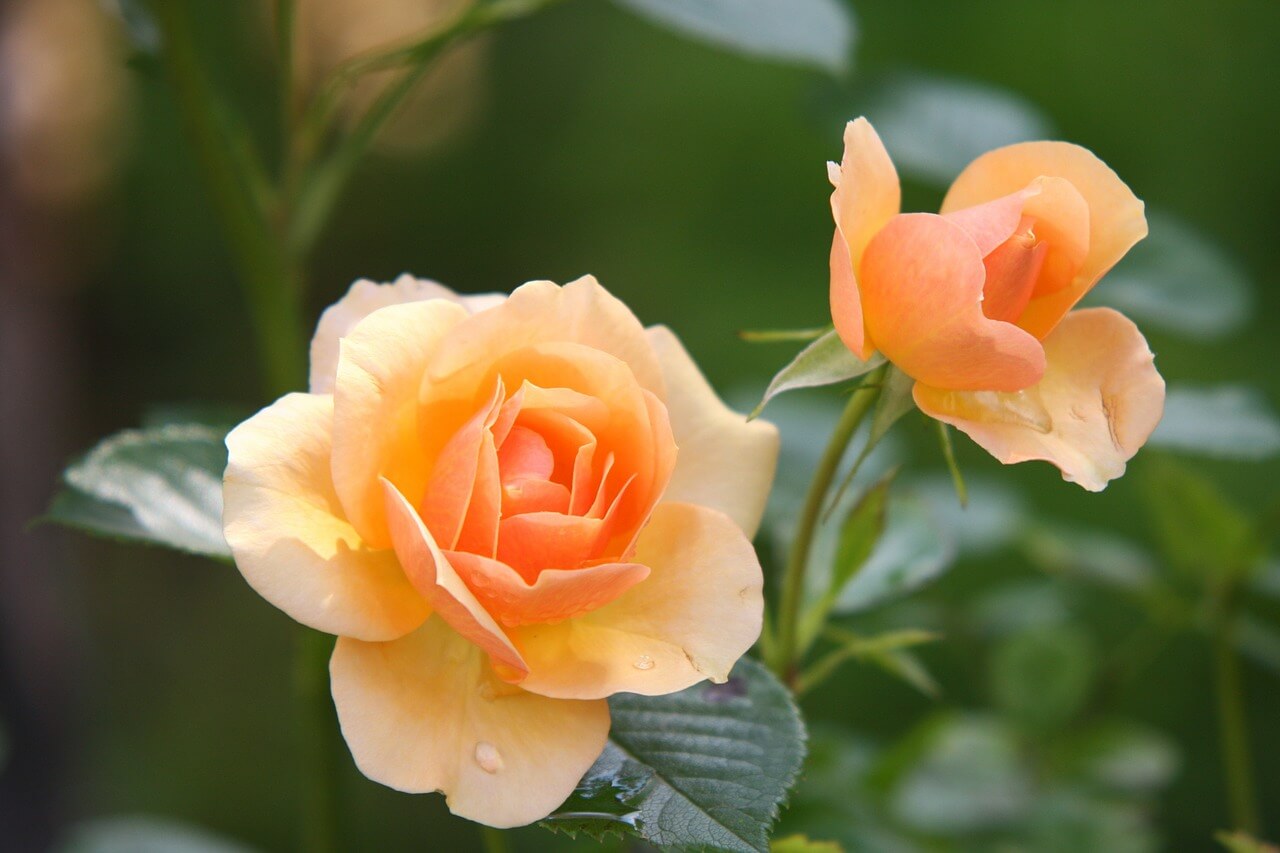We’re well on our way to summer’s heat (even with snow on the ground) and it’s time get started on revitalizing those landscape showstoppers, specifically roses and ornamental grasses. April is the perfect month to get your rose bushes and climbing vines in shape for a magnificent display in your Denver landscape. For basic rose care, you’ll need protective gloves and a pair of sharp pruning shears.
- Reduce mulch. With warmer weather, your rose’s roots are growing and no longer need the heavy insulation from winter’s cold. Remove some, but not all, of the mound of winter mulch around the base of your rose plants. Do this gradually over the course of a few weeks so your roses acclimate to the warming temperatures. Obviously if you have snow on the ground, make sure to wait until all has melted away. Gradual removal also protects the plants in the event of a late frost. Spread the old mulch around the soil; you’ll want a protective layer about two or three inches thick. Be sure not to cover the plant bases, as you want them exposed to sunlight to stimulate growth.
- Remove dead or damaged material. Rake away or pick off any dead leaves or damaged stems littering the ground or still attached to the plant. Just to be on the safe side, don’t compost this material to feed back to your plants.
- Water the roots. Check the soil about three inches deep. If it crumbles, then it’s dry and your roses need water. Water slowly and deeply to soak the roots. If the weather still threatens to freeze overnight, then be sure to water your plants during the warmest hours of the day.
- Fertilize. Like any living organism, roses and grass need nourishment. Fertilize the plants, but not until the leaves unfold or you could risk jumpstarting fragile buds while frost is still a threat.
- Spray. If you treated your rose last fall, then one more treatment before above-ground growth gets underway will help prevent a new infestation of fungus or other disease. Most applications require careful timing, so be sure to follow the instructions and keep a close eye on the weather.
- Prune. After the last freeze and before the buds begin to swell, stimulate growth by lopping off dead or dying canes, canes that rub up against other canes, damaged canes, and canes thinner than a pencil. Once you’ve thinned out the plant, you can shorten it if it’s too tall. Cut plants back as much as 15 inches for a few, large flowers or cut them back as much as 24 inches for more, smaller-sized blooms.
If your landscape features the drama of ornamental grasses, spring maintenance is pretty simple. Just be careful to wear protective gloves, as many ornamental grasses have sharp edges.
Ornamental grasses love warm weather, so you’re not likely to see much, if any, growth in April. This is the ideal time to cut them back. Tie the grasses into a bundle and use sharp hedge shears or even a chainsaw to cut through the stems. Cut them down to just a few inches above-ground. With a bit of mulch, fertilizer, water, and warm sun, they’ll spring back to full glory by midsummer. Spring is also a great time to plant new stands of ornamental grasses.
American Arbor Care is a comprehensive Denver tree service company that also offers full landscape and lawn care services to help homeowners save time and effort, beautify their yards, and add value to their properties. If you’re not an avid gardener, but love a well designed and maintained landscape, call us at (303) 639-8584 to schedule a consultation to unleash the potential beauty of your yard. Don’t forget that our service discounts end on March 31st!


